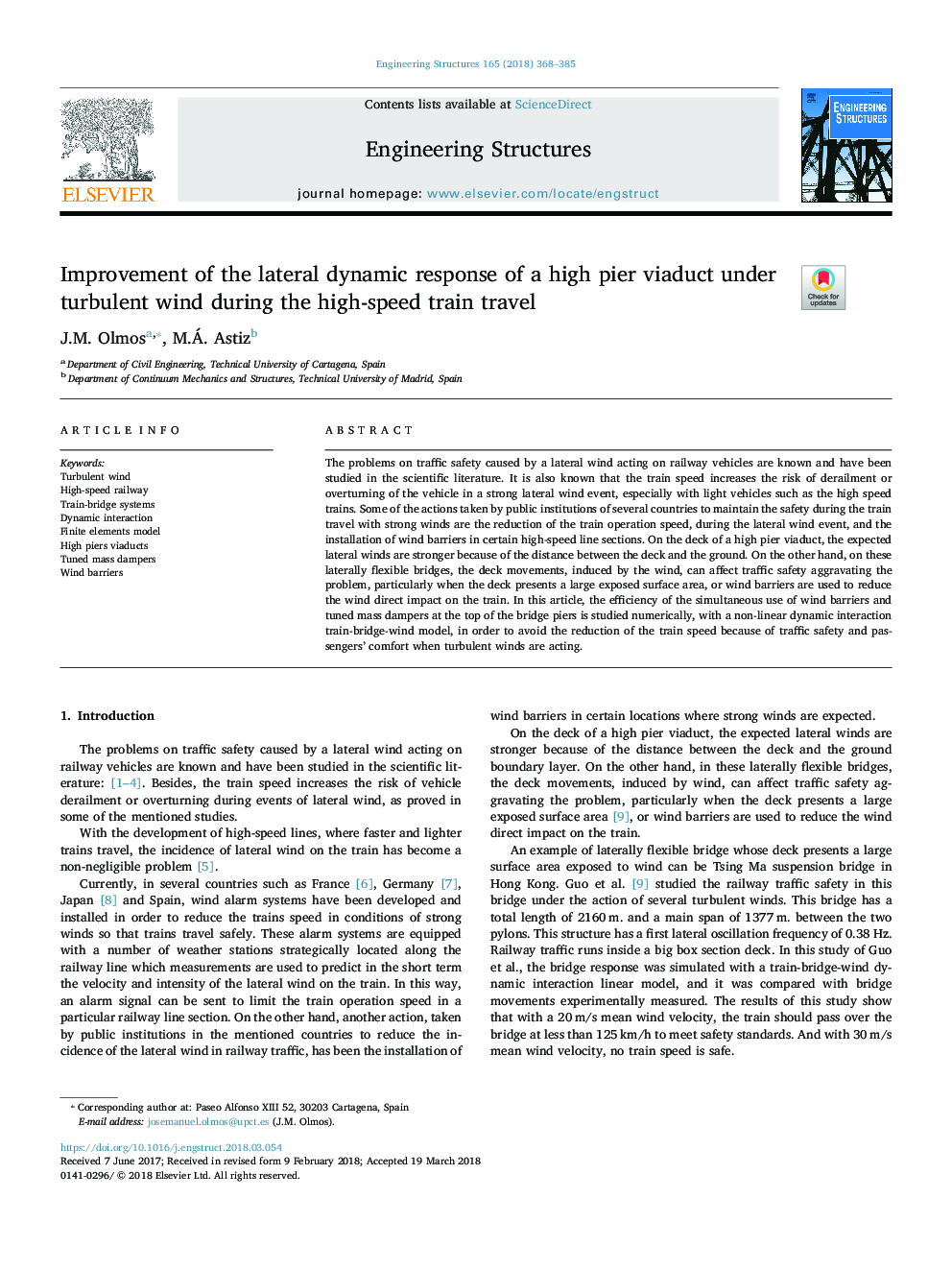| Article ID | Journal | Published Year | Pages | File Type |
|---|---|---|---|---|
| 6737667 | Engineering Structures | 2018 | 18 Pages |
Abstract
The problems on traffic safety caused by a lateral wind acting on railway vehicles are known and have been studied in the scientific literature. It is also known that the train speed increases the risk of derailment or overturning of the vehicle in a strong lateral wind event, especially with light vehicles such as the high speed trains. Some of the actions taken by public institutions of several countries to maintain the safety during the train travel with strong winds are the reduction of the train operation speed, during the lateral wind event, and the installation of wind barriers in certain high-speed line sections. On the deck of a high pier viaduct, the expected lateral winds are stronger because of the distance between the deck and the ground. On the other hand, on these laterally flexible bridges, the deck movements, induced by the wind, can affect traffic safety aggravating the problem, particularly when the deck presents a large exposed surface area, or wind barriers are used to reduce the wind direct impact on the train. In this article, the efficiency of the simultaneous use of wind barriers and tuned mass dampers at the top of the bridge piers is studied numerically, with a non-linear dynamic interaction train-bridge-wind model, in order to avoid the reduction of the train speed because of traffic safety and passengers' comfort when turbulent winds are acting.
Related Topics
Physical Sciences and Engineering
Earth and Planetary Sciences
Geotechnical Engineering and Engineering Geology
Authors
J.M. Olmos, M.Á. Astiz,
